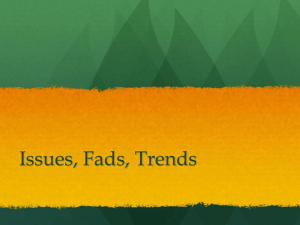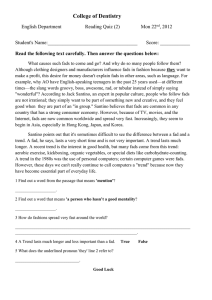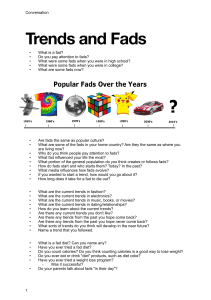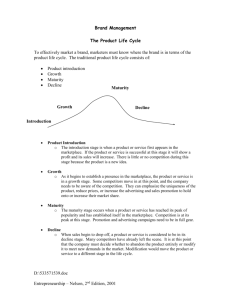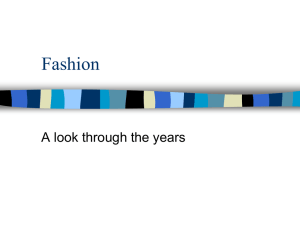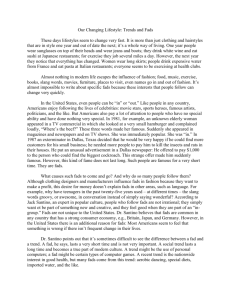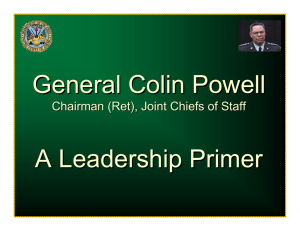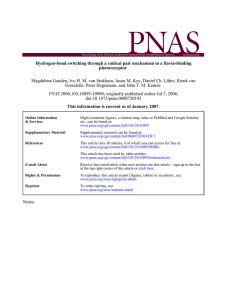Fads: Segmenting the Fad
advertisement
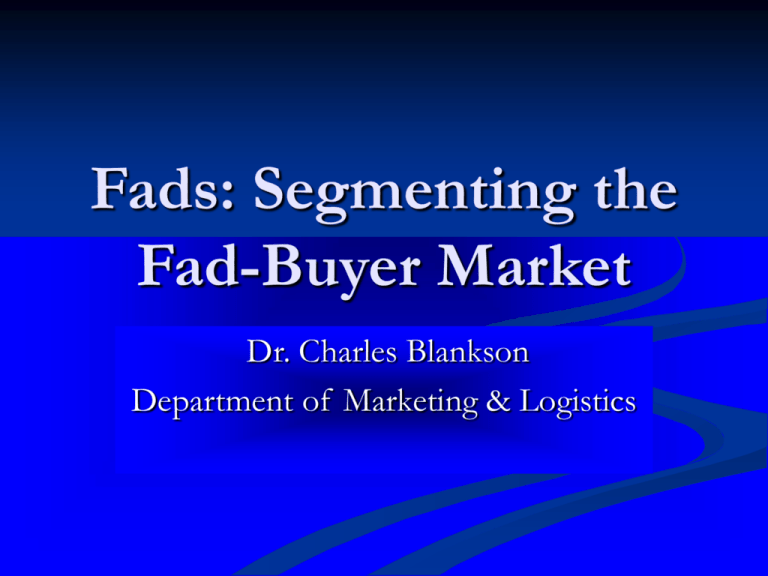
Fads: Segmenting the Fad-Buyer Market Dr. Charles Blankson Department of Marketing & Logistics Introduction A fad is defined as a product that experiences rapid, unexpectedly high sales followed by a decline. These sales are enthusiasm driven and may follow a decline in sales only to experience a boost in sales later down the road. An example of this would be the yo-yo which was created decades ago but still experiences peaks of popularity. The consumption of fad products offers a lens into current social events and values Marketing literature has not developed many guidelines or prescriptions to retailers/firms wishing market fads Literature has not explored fad purchasing and consumption Enablers Purchase fads for others and are typically parents of younger children. This allows the children to experience group affinity. Examples of Enablers Poppal ( Little stuffed animal critters that could fold into a little ball and go into a little pouch) My little Pony Barbie’s (replaced by Bratz Dolls) Cabbage Patch Dolls Teenage Mutant Ninja Turtles Nintendo (replaced by Xbox, Playstation 2) G.I. Joes Legos Silly Puddy Gak Belongers Similar to Enablers, however, Belongers purchase the product for themselves. Mostly teenagers are considered belongers. They do this to feel group affinity. Bell bottom jeans Platform shoes Glow in the dark stars Power Beads Paco/ Jnco Jeans Polar Bear Jackets Beepers/ Pagers (replaced by cell phones and email) Lava Lamps and Blacklights Mood Rings ( replaced by the livestrong/ cancer awareness braclets) Status-Conscious: A need to personally feel status achievement, even if this achievement is not displayed to others. Can also be viewed as a waste of money. Clothing Accessories ( Jewelry, watches, belts, etc.) Kitchen Appliances ( Bread makers, Juicer) Automobiles (classic cars, H2 in California, exotic cars) Seasonal Homes ( Having multiple houses in various locations) Nonchalants Simply liked a product that happened to be popular. Consumers bought the products due to the fact that they did like the product, not for the sheer fact that it was labeled as a fad, or a trendsetter. Icicle Lights Jack-o-lantern garbage bags Food (Atkins, Jenny Craig, Simple choice) Beverages ( Budweiser, Miller Lite, Corona, Samuel Adams, Vanilla Coke, The Original Coke, Jolt, Red Bull) Cars (BMW, Ford Mustang, Transam, Camero, PT Cruiser, Dodge Ram, VW Beatle) Ipod’s North Face Fleece Nike Sox Current Eventers Memorabilia of meaningful events. Interests in history and current events. American Flags after 9/11 Magnetic Car Ribbons Campaign memorabilia Berlin Wall Apollo 11 and 13 remnants War Memorabilia (bullets, weapons, medals, uniforms, pin’s) Beatles memorabilia Princess Diana Y2K Hobbyists People who initially purchases products while in a fad state, while awareness and availability was high. High personal involvement. Stamps Baseball Cards Coins Spoons and Thimbles Weapons (swords, knives, guns) Beanie Babies American Girl Dolls Fishing equipment Gambling Chips (different poker chips from various casino’s) Speculators Individuals who purchase fad items with a motivation to resell the item at a higher profit. Cars Beanie Babies Baseball Cards Collectables Antiques Hummel's Implications for Marketing Managers It’s hard to say if one can really pin point how to tell when something will become a fad or not. There is no real way of determining this. For mangers its definitely a nerve racking process, cause you don’t know exactly what will work. When it comes to advertising as a manager have to know what segment group you are trying to target your product towards once you decide that, then you decide whether or not if you should have a TV commercial, newspaper article, radio announcement, billboard, etc.) Implications for marketers Continued Marketers should pay attention to fads as much as they do for trends, because from a marketing management perspective, one reason to examine fads is how their short term nature affects the market share in some markets. Understand the seven fad segments, and how these individuals behave in terms of buying and spending. Once marketers understand the behavior and existence of fads, these should form the basis of marketing strategies/tactics. QUESTIONS ? WHAT OTHER MARKETING IMPLICATIONS ARE IMPORTANT FOR UNDERSTANDING THE FADBUYER MARKET ?

